AIR TRANSPORT Special airline liveries
Pimp my flight
Custom airline liveries are not just a great catch for aviation enthusiasts but are now a regular airborne marketing, sponsorship and advertising tool. But how does an airline decide on a special paint scheme? MARTYN CARTLEDGE goes planespotting.
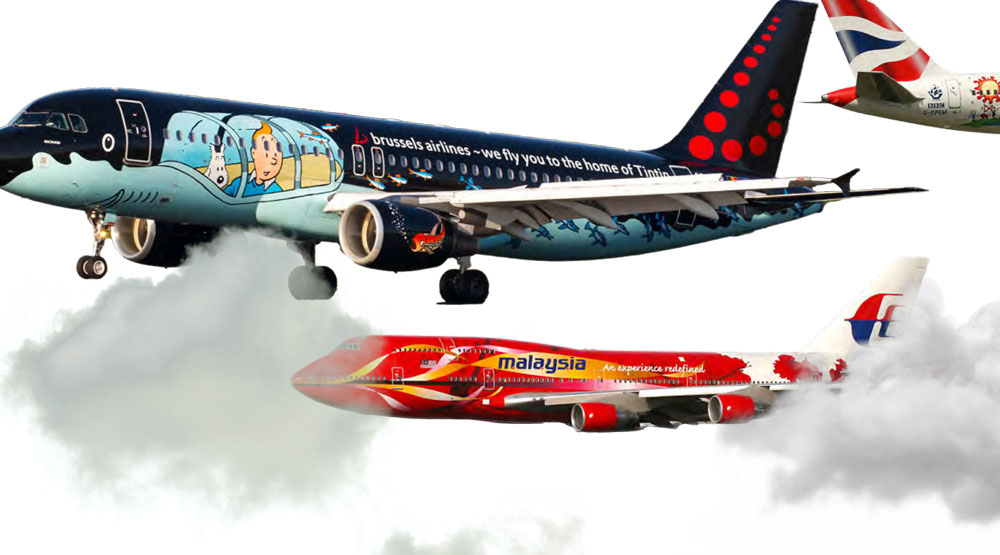
What is your first thought when you see an aircraft in a special livery? Is it a photo opportunity or a waste of paint? Perhaps it does not even register.
The airline involved clearly doesn’t want the latter but what function does it serve and why do they do it? The answer to the final part is long and varied and depends on many factors.
However, we could ask another question before all of these and that is: why do airlines have any form of complex coloured livery in the first place? Why not just paint the aircraft all or mostly white? This would be far more cost-effective and beneficial for a number of reasons. For instance, white paint reflects heat, so enabling an aircraft to use fewer resources, keeping it cool on the ground in hot climates. The airlines’ engineering departments might like it too because it would be easier to see damage or other issues. Additionally, being above cloud cover most of the time, aircraft are hit directly by UV radiation from the sun and, with this having the potential to cause damage, having a white fuselage would help mitigate the effects.
Leasing companies might love white aircraft because it makes them easier to turn around for the next user simply by changing titles and logos. An airline selling its aircraft would also benefit in the same way. In addition, white does not really fade in the same way as other colours, meaning it could go longer between repaints, which are a costly business. With one colour it would actually weigh less, as there would be fewer layers building up, although by negligible amounts.
There would also be no design fees and also no complicated painting processes (such as Virgin Atlantic’s unique Andaro method which uses both paint and tinted lacquer to produce the red on its aircraft tails).
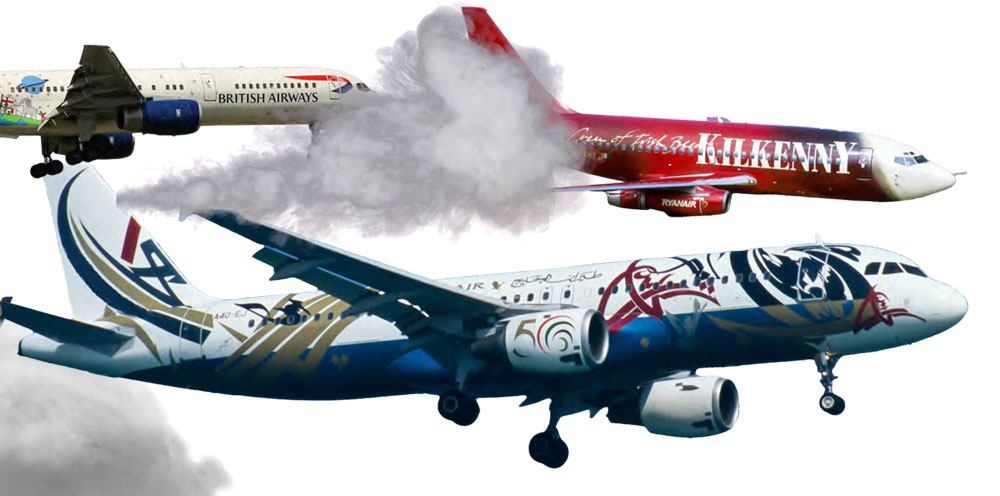
However, here in the real world, there are other factors. Branding is so very important and even more so nowadays when every moment of a passenger’s journey is often recorded with photos and videos to one or more of the many social media sites. Brand awareness, of course, has been around for ages and doesn’t just revolve around an aircraft livery, which is just one part of the carrier’s overall identity. Who doesn’t remember ‘Singapore Girl’?
There is, thus, a need for differentiation, a need to create loyalty to a brand and what it represents via whatever means the marketing executives choose – although some ‘marketing speak’ about what an airline’s livery is said to represent or be based on is often difficult to work out. That said, if you see a ‘widget’ you immediately know it’s Delta (despite the many changes) and the same goes for BA’s ‘Speedbird’, so ingrained is this as part of an airline’s history. Plus, if you have chosen an airline for specific reasons, then you want to know that the aircraft you are getting onto is one of that particular airline’s fleet (notwithstanding the use of airline alliances, of course, where the latter might not be the case and which sometimes causes confusion with passengers).
However, many operators will often modify or even change the livery completely on one or more of their aircraft to send out some form of a message to all that can see it. These of course are the aviation photographer’s friend – the special livery.
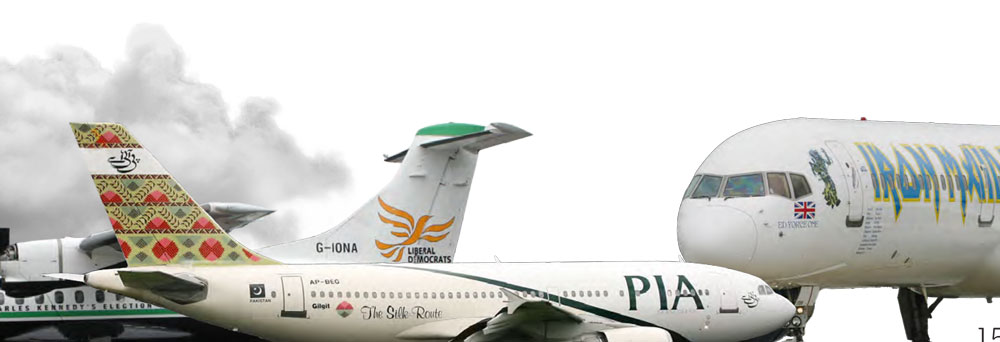
So what constitutes a special livery? What topics are covered and what are the reasons for doing it at all?
There are probably more types of special livery than you immediately can think of. In fact, during research for this feature I came across a website claiming to be the internet’s most comprehensive database of airliners in special liveries. This database holds over 1,300 separate entries and is just those that are current. A historical one would, no doubt, be many times that.
Special liveries can be in many different forms from a simple logo and phrase on a small part of the fuselage right through to a complete covering of the fuselage and tail fin.
It is generally considered that it was the Calder designs of the early 1970s on Braniff aircraft that were the first ‘real’ full aircraft special liveries. Then, in 1984, Southwest introduced the famous ‘Shamu One’ design advertising SeaWorld and with it starting many other different designs and themes.
The themes or topics that are or have been used on aircraft are just as wide and these types of use have waxed and waned over the years.
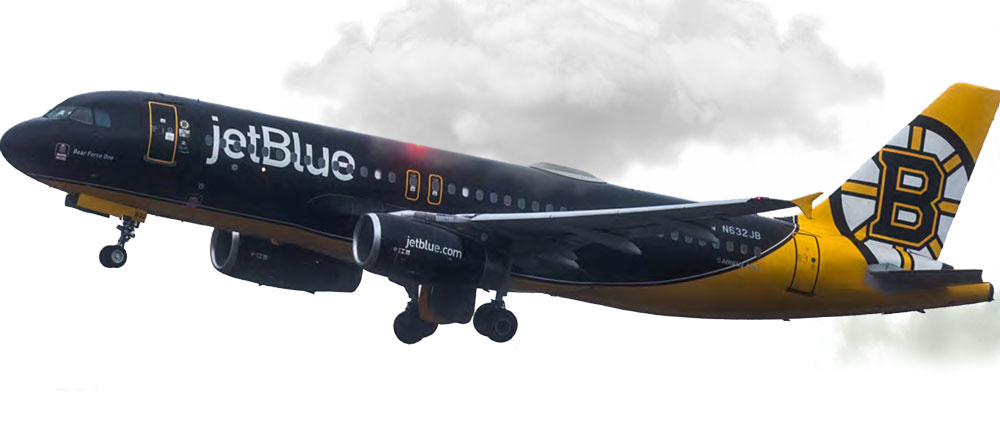
For instance, one topic that used to be more prevalent in the past, is simple pure advertising of products with a great proponent of its use being Ryanair in the days of its 737-200s. The reasons for this type of use are seemingly quite clear; it is a straightforward advert paid for by the likes of, in Ryanair’s case, such diverse products as Jaguar cars, mobile phone companies, beer and British newspapers to name but a few.
Some airlines will have limitations as to what they might advertise because of shared beliefs, or not as the case may be and, as time has gone on, this type of use has reduced.
Airlines now advertise companies/products which have a link in some way to the carrier or have a greater overall link to the airline or its services. Disney has a number of airliners with its films and parks being advertised. Taiwanese carrier EVA has gone a stage even further down these lines with its link up with the ‘Hello Kitty’ brand. Not only are aircraft painted in Hello Kitty special liveries, the check-in areas and on-board branding is included, there are special Hello Kitty flights and the airline actively advertises where these aircraft will fly, as it has a strong demand from their customer base to fly these aircraft regardless of the destination, making for an obvious benefit of such a livery.
This type of livery has a definite overlap into the next category, that of sponsorship. This is a more difficult area to determine just where the specific benefit to the airline in painting an aircraft actually lies, as it may just be a part of a much larger sponsorship package and difficult to quantify just what part of the package has contributed to the success of any advertising campaign. Emirates is a good proponent of this, as it has liveries for a number of football clubs but this also might come with shirt sponsorship or even stadium branding. As with all sorts of sponsorship deals the reasons are quite varied, from brand awareness to cross-promotion with another sector.
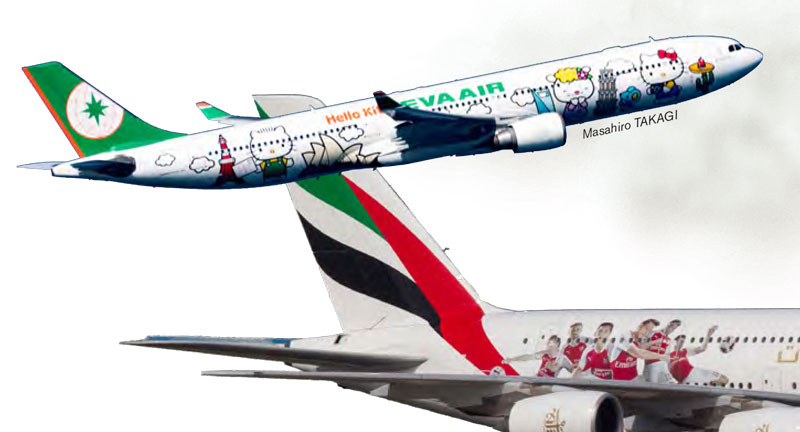
Sport in itself is quite a massive topic with airlines advertising all sorts of different teams and events involving many countries around the world – the most obvious being football, cricket and rugby World Cups. Qatar currently has at least two aircraft in liveries advertising the World Cup in Qatar this coming winter. In addition, as mentioned earlier, this could be part of larger sponsorship agreements which could include travel to international games as part of this deal.
Many airlines have sporting club liveries painted onto their aircraft. However, sometimes these can just be aiming at saying to the travelling public – ‘ are your hometown airline’ and strengthening local community links. JetBlue is especially known for this with bases in New York and Boston. Its aircraft have been painted in special sports team liveries advertising the Boston Bruins, Boston Red Sox and Boston Celtics. New York has the Jets but is included in a less subtle way, having an aircraft in livery based around the well-established New York branding and even one which draws inspiration from NYC street art, architecture and hip hop.
This takes us into yet another topic, that of thanking an organisation’s personnel, be they local, national or even its own employees. JetBlue has aircraft in liveries thanking New York’s Fire Department, with another honouring armed services, either current or veterans.
Some airlines have included liveries with some form of visual thank you to their employees – going way back to Canadian Airlines which painted signatures of staff members onto a DC10 in the late 1990s.
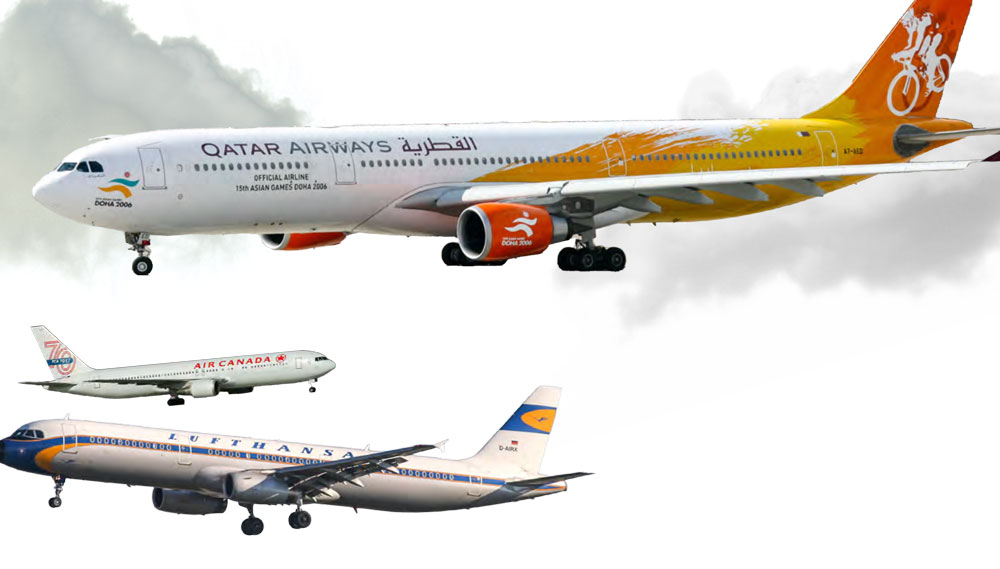
National pride can be another reason for special liveries and this again can have variations. There can be anniversaries of a country’s existence or independence, the love of a ruler, the sights to see there or the affirmation of just which country this airline belongs to, over and above whatever the standard livery might have.
Aircraft are often now used to advertise routes or bases for that airline, with the reasons for this seemingly obvious in advertising where you can travel to and from with the airline in question. More often than not this is for new routes but, of course, the livery can often remain on an aircraft for some time, so careful thought needs to go into such a decision.
Another recurring trend is for airlines to paint aircraft in retro liveries. These can be either liveries the airline used to have on its aircraft or, most often in the US, of airlines once loved by the travelling public but now absorbed into others. Reasons for this type of livery seem to revolve around reminding the public just how long the airline has been around and therefore how stable it is, or perhaps to attract users of the long-gone airlines, particularly if that airline was iconic or well-loved.
Good causes are also something to be found painted onto airliners with charity partnerships and non-profit tie-ins. This has a number of beneficial points. The cause in question gets fantastic exposure and the airline, (if you wanted to look at it in a cynical fashion), will be seen as ethical, caring and concerned about the social good.
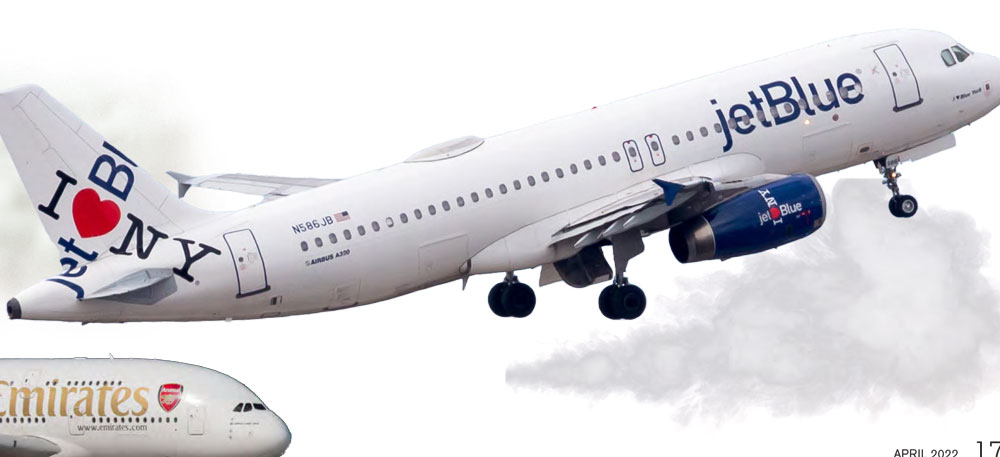
Another topic which in recent years has gained, quite rightly so, a much greater awareness is that of the environment. With airlines perceived as a large contributor to greenhouse gasses, it is not surprising that many are quick to shout about their green credentials.
Although the likes of VLM and flyBe had ‘green’ liveried aircraft in the past, much bigger and, dare I say, more important airlines are now being overt in this field. For example, at the moment Etihad has a Boeing 787-9 painted in what it calls the ‘Greenliner’ livery. British Airways has an A320 in what is termed by the company as a ‘BA Better World sustainability livery’ with Emirates having sustainability as one of the sub-themes for the Dubai Expo 2020 liveries.
In general, these special liveries are part of a broader campaign to highlight an airline’s effort to become more sustainable and reduce the carrier’s carbon footprint with the use of more efficient engines, more sustainable biofuels and carbon offsets. Many go further with reducing single-use plastics etc. In the case of Etihad, its programme is also looking to use software to reduce contrails which is a major factor in an airline’s total effect on climate change.
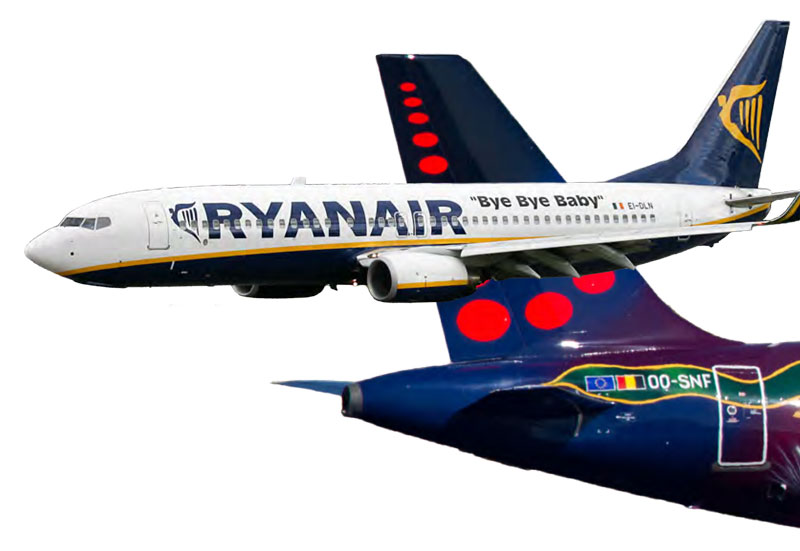
Airline alliances have also spawned special liveries of their own. Each of these liveries are standard in their basic design but will have sections to allow for the member airline’s logo or titles. These liveries are all about belonging. They advertise that these airlines are part of an exclusive grouping and if passengers book through the alliance they can be sure of certain levels of service – a ‘kite-mark’ if you like of a standard of product quality.
There are also some other smaller themes for custom liveries, for instance, one airline might have used them as a very public dig at a rival. One example of this was easyJet with ‘Stop BA Stop GO’ on the side of early 737s. Close competitor Ryanair also got in on the act with both ‘Bye Bye Baby’ aimed at bmi Baby and ‘Arrivederci Alitalia!’ on its own 737s in 2007, the latter prompting Italy to accuse Ryanair of being ‘vulgar and offensive’ towards the rival airline.
The current Covid-19 pandemic has also produced some special liveries with a few aircraft sporting masks on their noses. Christmas and other holidays also tend to produce some special schemes, as does the odd competition aimed at the public designing a new or special livery for the carrier, although the benefits to the airline in these cases is somewhat less obvious, most probably down the lines of brand awareness.
Manufacturers can also get in on the act with notable aircraft deliveries marked with special titles, mostly in conjunction with the airline, of course. Also the manufacturer’s livery is often changed to advertise the benefits of the particular aircraft’s performance. However, Embraer has to take the award for one of the most striking with its ‘Profit Hunter’ liveries on its new E2 range of aircraft. It is generally the manufacturer that brings up the topic which turned out to be an A350-900 to Singapore Airlines.
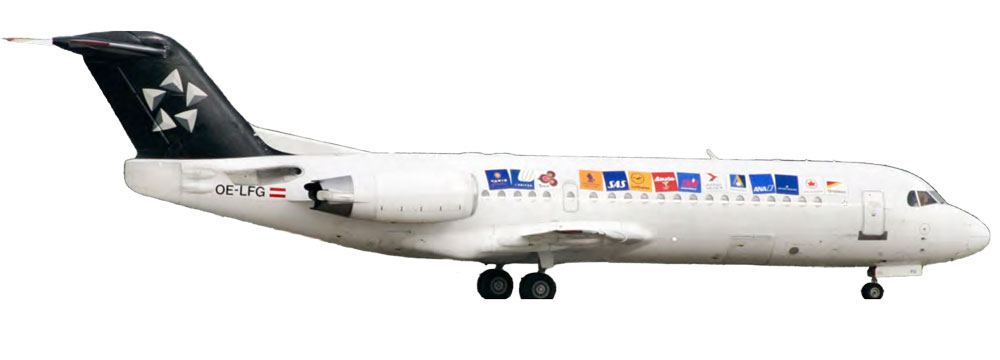
Once a theme for a custom livery is decided, what happens next? Who decides this and who else is involved? While many airlines are coy about the reasoning, the basic process can be no different from any other business decision. Firstly, there is a need, perceived or real, for the change, be it internally or via an approach from a third party, to advertise. Then, a budget will be set, a design process is undertaken and, finally, the application onto the aircraft.
The design process could either be undertaken by in-house design, if it is a large airline, or more likely, by a design house, such as Aerobrand, McDiarmid Design, Priestman Goode or AES Global.
The painting may happen at either the manufacturing stage or later, should it be changed from a previous livery. Design time can be variable and will need to include consultation from all the parties involved depending on the topic of the design. Even then, the lead time between final definition and paint start can be around eight months. For example, before the painting can start, the initial design ideas need to be adapted, since they may not actually be technically feasible or are too complex to be accomplished in the price range that the customer is willing to accept.
Kevin Prince, Operations Director at Airbourne Colours, an aircraft painter and refinisher with sites at EMA and Bournemouth, gave some insight into the process of applying a special livery to an aircraft.
While he understatedly explained that “basically it’s painting by numbers”, the process is strictly controlled and applies to any livery design. Once the design has been signed off by a Part 21 company, official drawings are made and sent to the aircraft painting company. In fact, the hardest part about getting a livery off a page and onto an aircraft, something that is exacerbated with a special livery, is that a drawing is 2D and an aircraft fuselage clearly is not. So there can be quite a bit of managing of expectations sometimes when it comes to a special livery.
However, Kevin is enthusiastic about custom designs: ”We like doing special liveries” despite the fact that airlines very often want: “the mad and crazy”. Even so, the process to paint an aircraft in a special livery is, at the core, the same as a standard livery in that you build up a livery colour-by-colour, layer-by-layer, masking sections to ensure the paint is positioned correctly.
That said, there are some sections or liveries that simply must be done freehand, just like an artist painting, only with a spray gun. Furthermore, there are some jobs that require that little bit extra to produce the end result and that is when outside specialist aircraft painting artists are brought in – like the renowned, and somewhat eccentric, Polish-based Andre Eisele who has done many iconic designs like the Tiger nose on a Rossiya 747, Westjets Disney Frozen themed jet and many of the Brussels Airlines specials.
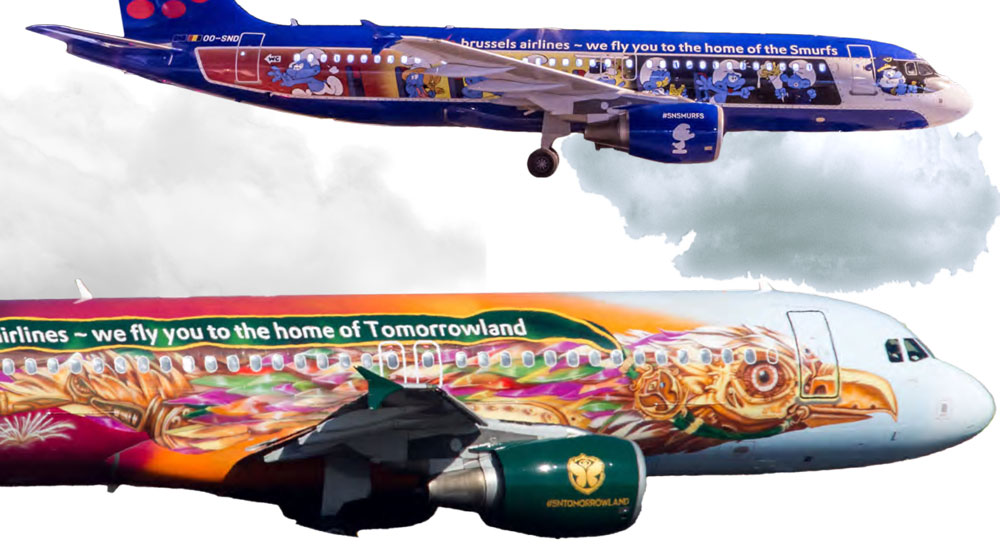
An alternative way to achieve the effect if a graduation is requested from one colour to another with the advantage of it being reproducible is stencils. Dot-graduation is based on the use of a stencil with dots transitioning in size and distance. First, one colour is applied. When that has dried, the stencil is applied, and the second colour is sprayed on. After drying, the stencil is removed and the different density of dots creates an impression of blending from one colour to another. From a distance, the individual dots themselves are hardly distinguishable.
It is also possible to use decals but these tend to be on smaller areas (although they can be used on surfaces as large as a tail fin) but, as they need regular checks to ensure they are still ok it really depends on how the aircraft is to be used. For instance, the ex-Virgin A340s now operated by the European Aviation Group to carry PPE were to have the NHS titling added by decals but such was the usage of these aircraft that there was no time for regular inspections, therefore it was painted instead.
Airbourne Colours produced the Brussels Airlines ‘Tomorrowland’ livery, utilising a team of eight artists who initially had the outline drawn on the aircraft before it was hand-sprayed. As you might imagine, here is where the major differences of applying a special, as opposed to a standard livery will be seen. On average a standard livery will take about seven days to complete, whereas a special can take another nine or ten on top.
This, of course, has an impact on cost and, when other factors, such as outside artists needing to be employed etc, the cost of applying a special livery can easily be triple that of a standard repaint. This is on top of the design companies’ fee and the extra costs in lost revenue with the aircraft being out of action for over twice the time of a standard repaint. This is often one of the challenges when it comes to customer expectations, as they often do not realise that the variations in paint application for special liveries can impact the lead time for the job.
So, the next time you see an unveiling of a special livery, there is a lot more than meets the eye.